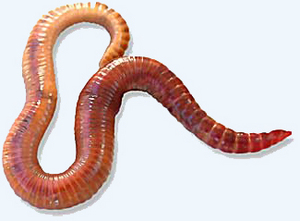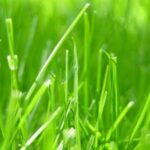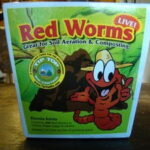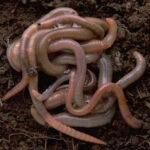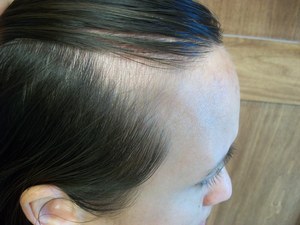Vermiculture, or worm composting, is the practice of using worms to produce natural fertilizer – in the form of worm casings – to add to your garden. Worm casings are one of the richest fertilizers that you can add to your garden and one of the best things about them is that you can produce them for free after your initial set-up costs. There are two ways to go with vermiculture. One is to use a variety of worm called red wigglers (Eisenia Foetida) which thrive on all manner of kitchen waste. The other method, which has been used for generations, but is less often considered by modern vermiculturists, is is to cultivate brown earthworms (Lumbricus Terrestris), and add them directly to your garden where they will live and reproduce, making casings all the while. This is quite different than regular composting.
Composting With Worms
For red wigglers, you will likely need to order a starter batch of worms. There are a number of online sources, so this should be no problem. You will also need a vermiculture bin or worm bin. Vermiculture bins require two or more stages or compartments, each separated by a wire mesh. New kitchen waste is added at the top layer. As it is reduced or turned into worm casings, it falls through the mesh into the lower chamber. The lower chamber is then emptied directly into the garden as it becomes filled.
Worm Composting Bins
Using multiple layers helps keep smaller scraps of kitchen waste and liquids from dropping directly into the bottom layer before the composting worms have processed it. Putting undigested kitchen waste into your garden can cause a mold problem, so this should be avoided. If the lower chamber does have unprocessed bits left in it, you can simply dump it back into the upper chamber to let the red wigglers have another go at it. The upper layers need to stay moist to prevent the worms from drying out, and all layers should have good aeration through holes in the sides of the compost bin.
Use Red Wigglers to Compost Kitchen Scraps
This method is truly vermicomposting as you are using worms to break down kitchen waste into fertilizer, much the way you would with regular composting. Note that red wigglers are happy to live in fresh kitchen scraps, but ordinary brown earthworms such as you will find in your garden soil are not. If you try the above method with ordinary earthworms, they will most likely die. Brown earthworms have their place in vermiculture, too, but different methods must be used.
Using Brown Earthworms for Vermiculture
The second, older method of worm composting involves worms that can live right in the garden soil. This method is better suited to areas that receive a fair amount of natural rainfall and where earthworms can typically be found on the surface of the ground at night or after a rainfall. Essentially, the goal is to create very large earthworm populations in your garden. Brown earthworms eat decaying vegetable matter. They especially preferring decaying leaves like those you rake up by the barrelful each autumn. If you have an appropriate area on your property simply spread these raked up leaves over the ground, and leave them there. The following spring and summer, you will find that underneath the bottom layer there are many, many earthworms. You may need a hand trowel to loosen and sift through the soil underneath the leaves to find them, but they will be there.
Harvesting Worm Casings and Worms
You will also find that underneath the leaf pile the worm casings collect. Fill a bucket with the casings and toss the worms right in. Then empty the bucket into your garden. The worms should appreciate the light, uncompacted soil of your garden and should make themselves right at home, especially if you prepare your garden soil appropriately. Earthworms, as previously mentioned, dine on decaying plant matter. In order for them to stay and thrive in your garden, they need a source of food. This is where the savvy gardener will skip a step and save herself some work. If, every fall, you mix the raked leaves directly into your garden soil, you can save the collection and transporting of the worms. They’ll be attracted to your garden soil naturally because of the abundant food there. You can use whole leaves but running them through a leaf shredder works even better and helps them to decay faster.
Adding Leaves to Raised Bed Gardens for Vermiculture
I have used this method in my raised bed gardens with great success. I can’t generally even dig a hole for a new seed in the spring without digging up a worm happily composting the leaves I have mixed into the soil. Again, though, you want to avoid a mold problem in your garden. Add leaves with moderation, I use a five gallon bucket full of leaves for each three foot by twelve foot raised bed. Spread the leaves out over the surface and then turn them under with a shovel. Treat each garden bed this way once every other year and you’ll have plenty of worms producing casings right where it needs to be.
My Favorite Worm Composting Method
Although modern vermiculture tends toward the red wiggler worm composting method using kitchen waste, most likely because it is easier to sell products based on that method, I have always preferred to put the leaves I rake to good use and to do my worm composting with worms that are native to the area in which I live. It’s far less work, and there are absolutely no start up costs to buy red wigglers or a worm composting bin. There is also a side benefit; brown earthworms are a particular favorite of both trout and catfish. Your garden won’t miss a few should you decide to go fishing every now and then. Whichever method of vermicomposting you choose, worm casings are the best natural fertilizer that you can add to any garden.
